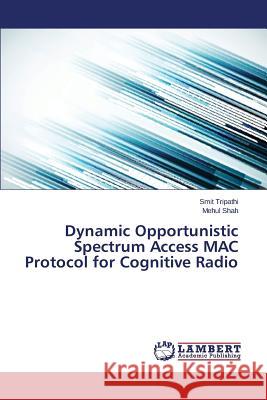Dynamic Opportunistic Spectrum Access MAC Protocol for Cognitive Radio » książka
Dynamic Opportunistic Spectrum Access MAC Protocol for Cognitive Radio
ISBN-13: 9783659611773 / Angielski / Miękka / 2014 / 64 str.
Medium Access Control (MAC) protocols plays very important role in Cognitive Radio (CR) networks. CR enables the Secondary (unlicensed) Users (SU) to opportunistically access the spectrum unused by the Primary (licensed) Users (PU). The two main functions of the CR MAC are interference control and avoidance for PUs and collision avoidance among SUs. This book is the case of overlay spectrum sharing mode of contention based, distributed, non cooperative spectrum sharing access mode protocol. In order to devise efficient CR MAC protocol, it will be efficient to use CSMA/CA based protocol as it helps in overcoming the major challenges of hidden terminal problem and exposed terminal problem in cognitive radio networks. This book presents a novel opportunistic MAC protocol for single channel which opportunistically utilizes the spectrum unused by the PUs. In case of collision, a dynamic backoff scheme is applied. Results of the Opportunistic Spectrum Access (OSA) MAC for single channel are compared with dynamic OSA MAC scheme. The results show that throughput and access delay of our proposed scheme are better than the OSA MAC scheme.
Medium Access Control (MAC) protocols plays very important role in Cognitive Radio (CR) networks. CR enables the Secondary (unlicensed) Users (SU) to opportunistically access the spectrum unused by the Primary (licensed) Users (PU). The two main functions of the CR MAC are interference control and avoidance for PUs and collision avoidance among SUs. This book is the case of overlay spectrum sharing mode of contention based, distributed, non cooperative spectrum sharing access mode protocol. In order to devise efficient CR MAC protocol, it will be efficient to use CSMA/CA based protocol as it helps in overcoming the major challenges of hidden terminal problem and exposed terminal problem in cognitive radio networks. This book presents a novel opportunistic MAC protocol for single channel which opportunistically utilizes the spectrum unused by the PUs. In case of collision, a dynamic backoff scheme is applied. Results of the Opportunistic Spectrum Access (OSA) MAC for single channel are compared with dynamic OSA MAC scheme. The results show that throughput and access delay of our proposed scheme are better than the OSA MAC scheme.











